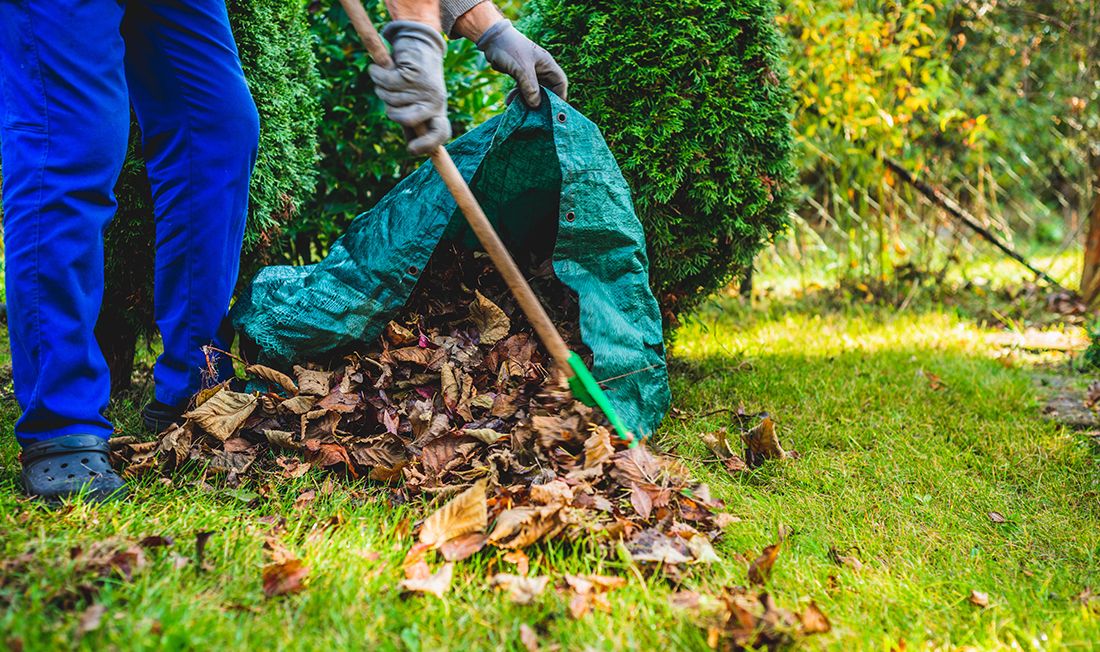If you have trees or shrubbery in your lawn, it’s inevitable that the fall will bring leaves, berries, nuts, acorns, and other debris falling down to the ground. This can be unsightly, and it can also be a real pain to clean up. Particularly those small acorn caps, leaf stems, and other minuscule pieces of vegetation that seem harmless. They don’t really block sunlight, they don’t seem to damage the leaf blades or the roots, and they don’t transmit diseases. Might as well leave them. But are they harmless? Let’s look into the implications of soil physiology before determining whether you should do the extra work to clean up all of that pesky debris.

C:N Ratio
Nitrogen is the most critical nutrient for turfgrass growth. It’s a primary component of chlorophyll and several amino acids, and it serves a plethora of other roles. Nitrogen exists in the soil in many forms, each of which require the activity of microorganisms to convert to the plant available forms. These microorganisms derive their energy from carbon, much of which comes from decomposing organic matter. A good balance of carbon to nitrogen, known as the C:N ratio, is essential for providing microorganisms with the energy that they need to break down the organic matter while cycling nitrogen to make it available for plant uptake.

Nitrogen Availability
So, what is an ideal C:N ratio, and what happens when it gets out of whack? An ideal ratio of carbon to nitrogen for turfgrass is around 30:1. Higher concentrations of carbon, such as those found in woody plant materials in your lawn, mean that these microorganisms must utilize more nitrogen to balance the carbon, resulting in nitrogen that’s tied up by microbes and a slower decomposition process. This “tying up” of the nitrogen by microbes is referred to as immobilization, and it results in nitrogen that is unavailable to the plants as it’s being used by the microorganisms. Therefore, those little pieces of sticks breaking down in your lawn might be doing more harm than you might think.

Root Competition
Often, bare spots are present in areas where there is significant lawn debris, but there are other factors besides unavailable nitrogen that can play into this as well. These areas often have lots of subsurface roots coming from the trees and shrubs that drop the debris. These roots can take away available water and nutrients from the lawn, leaving it hungry and thirsty in these areas. Heavy organic matter buildup here can also contribute to acidity in these spots. Try irrigating these areas a bit more, and pull a soil test in these spots alone to determine whether or not the pH correlates with the rest of the lawn.

Why is Leaf Cleanup Important?
One of the more annoying fall tasks is leaf cleanup, but it can be critical to ensuring that the lawn is healthy. While it’s sometimes touted as “free-fertilizer,” that’s not necessarily the case. Like all organic material, leaves breaking down year after year will continue to acidify the soil. If your pH is low, particularly in bare areas, it’s best to keep the area clear of leaves. Prior to dormancy, the lawn needs to utilize every bit of sunlight that it can get as the grass stores carbohydrates and critical nutrients, such as potassium, to protect itself from harsh winter temperatures. Leaves lying on the lawn will block this sunlight during a critical period for grass growth, particularly as the day lengths become shorter. While mulching your leaves may prevent this to an extent, only do so if your acidity is in an acceptable range, and you mulch the leaves fine enough that they don’t shade out the grass.









